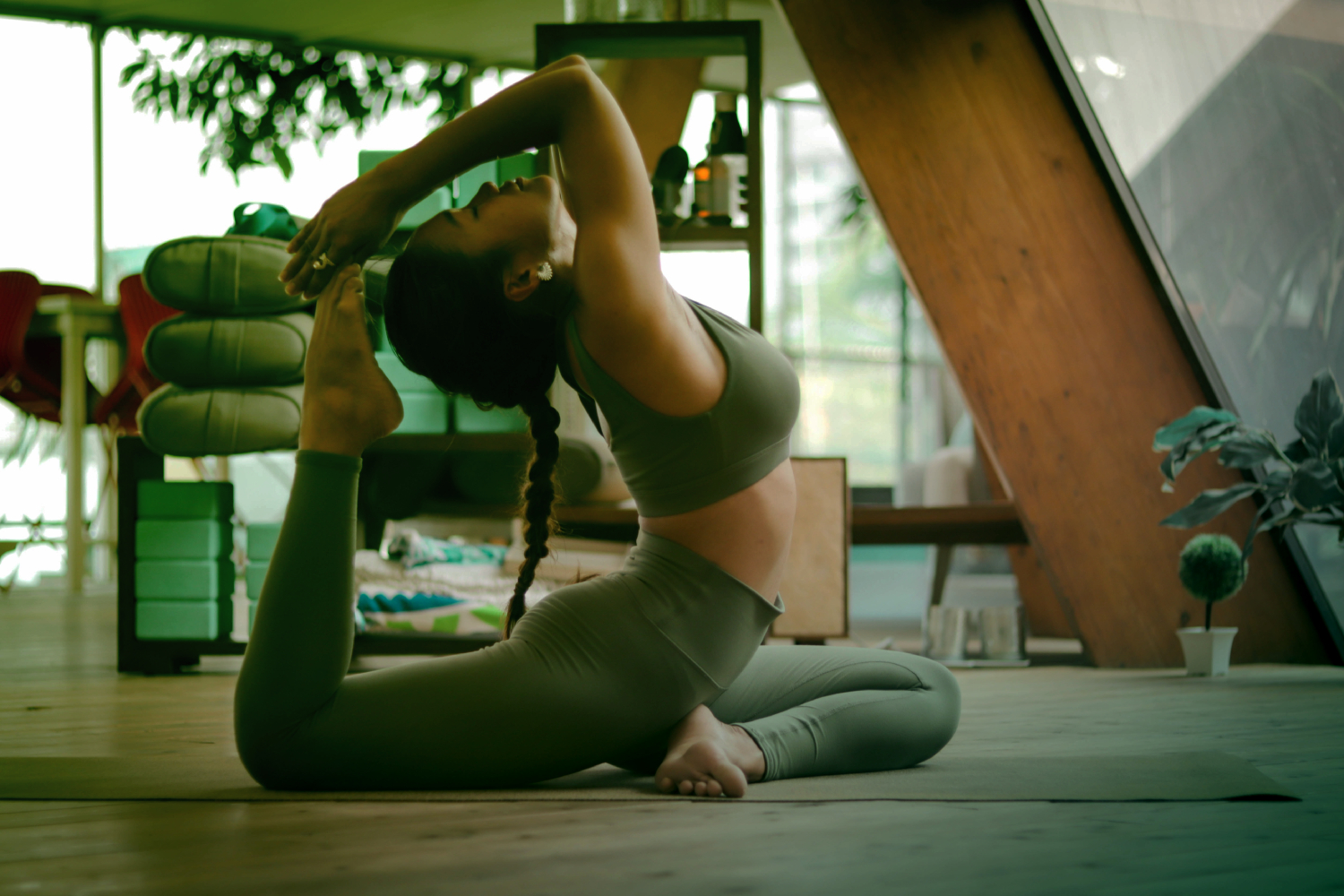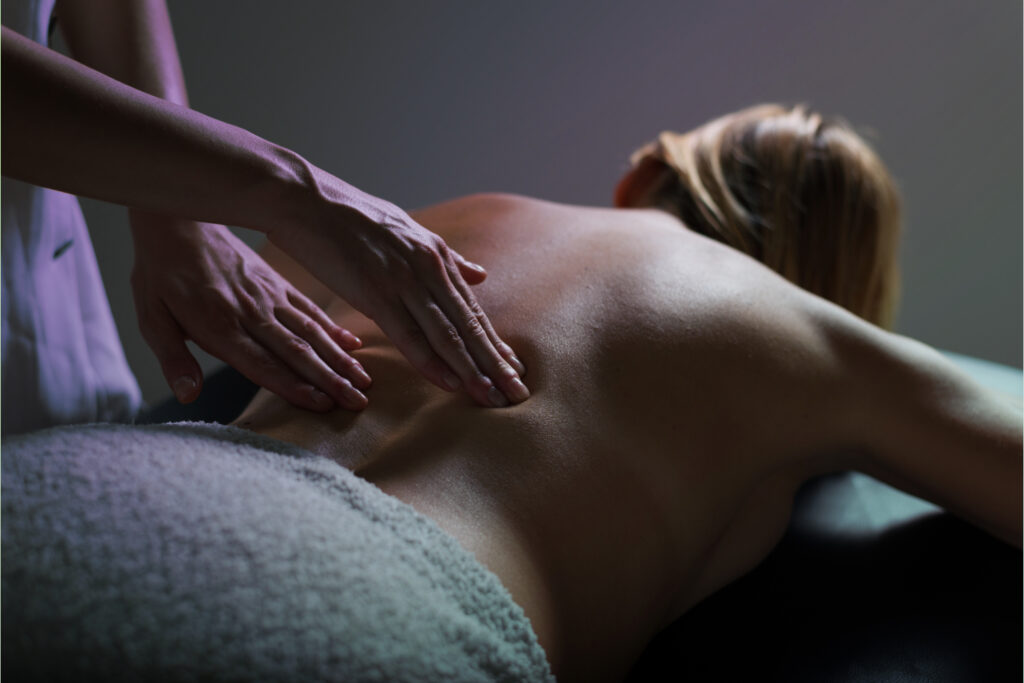However, there’s a big difference between being fit and dealing with the pain of chronic muscle tension.
Muscle tension is what happens when your muscles contract, but they don’t release again. This is a common problem for people for people who do a lot of regular exercises or suffer from stress.
Muscle tension sometimes happens after an injury too. If you leave this issue untreated, it can lead to further problems, like strain, chronic pain, and tension headaches.
So what do you do if muscle tension is making it impossiblefor you to enjoy your life?
We’ve got some quick and easy strategies in place to help you overcome the issue of muscle tension once and for all.
Let’s take a look.
1. Massage therapy
Getting regular massages might seem like an indulgence that only the most wealthy people can afford. However, the truth is that massage isn’t as much of a luxury as it used to be.
This circulation-boosting practice is thousands of years old, and it addresses the muscle in releasing contractions and reducing pain. The critical thing to remember about massage for chronic muscle tension relief is that there are lots of different kinds of massage available.
Swedish massage is excellent of you have minimal tension in your body. On the other hand, if you have discomfort because of a physical injury, it might be worth looking into a deep-tissue massage.
These days, it’s easier than ever to track down reputable therapists in your area with a quick search online.
Massage therapy:
- Quickly reduces muscle tension
- Improves circulation and stimulates the lymphatic system
- Reduces stress and promotes relaxation
- Increases mobility and flexibility (for less risk of future injury)
- Improves recovery speed for soft tissue problems
2. Practice yoga
Yoga isn’t just an excellent tool for stretching your body and building balance – it can also be a fantastic strategy for tension management. Some claim the practice of yoga is over 5,000 years old.
This strategy teaches people how to stretch, lengthen, and relax muscles while working on their breathing simultaneously.
Yoga handles the physical and mental side of muscle tension relief by providing a convenient and effective way to manage stress and improve relaxation.
If you’re suffering from tight muscles, there are a few movements you can try:
- Downward dog: the best-known move in yoga. Start on your hands and knees and press your palms and feet flat against the floor. Lift your backside off the mat into the air, so that you create an inverted V shape.
- Low lunge: This is an excellent move for reducing muscle tension in your lower body. Moving from your downward-facing dog position, rest one leg with our knee and the top of your foot against the floor. Bend the other knee and stretch your floor-based leg out behind you. Reach up towards the ceiling.
- Spinal twist: Perfect for back-based tension. Lie on your back on the mat; arms stretched either side of you. Move your lower body to one side, so that you’re resting your weight on one hip, with your knees pointing in one direction. Keep your head and upper body facing in the opposite direction as much as you can.
Remember, there are many different kinds of yoga. Taking a class might be a great way to add some relaxation practices into your routine. You can also start slow and learn which moves are best for you.
3. Get hydrotherapy involved
If you’ve ever taken a hot bath to relax, you’ll know how powerful water can be in curing whatever ails you. People have been using the healing power of water for centuries – there’s even evidence that people took hot baths regularly in ancient Egypt.
While ice is sometimes the cure of choice for specific injuries, muscle tension tends to respond best to heat. Hot water allows the fibers in your muscles to relax and loosen, reducing the amount of tightness in your body.
The warmth decreases muscle spasm, relaxes tense muscles, relieves pain, and can increase range of motion.
Hot baths are also a great way to soothe the nervous system. You can add healing substances (like Epsom salts) into your bath for an extra boost too.
Epsom salts are great for promoting sleep and stress reduction. These salts assist with performance and recovery for regular athletes – and they provide an extra dose of magnesium.
If you’re suffering from pain and swelling after a particularly challenging workout, a hot bath with a dose of Epsom salts could be just the thing for you.
If you’re particularly lucky, and you have a local health center near you, then you could look into using whirlpool baths and saunas too. These can be an excellent way to eliminate extra stress.
4. Practice relaxation
One of the biggest problems people have with muscle tension is that they don’t know how to let it go. People practicing things like progressive relaxation say that they don’t realize how much stress they’re carrying around until they address it.
Relaxation techniques are everywhere, from guided meditation to breathing strategies. The key to success is finding a way to relax your muscles, elevate your sense of wellbeing, and reduce stress hormones in your blood.
A few options include:
- Guided imagery: This is a form of guided meditation where you use the imagery in your mind to place yourself into a tranquil setting where you feel safe. Include things like colors, smells, and sounds when creating your imaginary environment.
- Deep breathing: There’s a kind of deep breathing technique called foursquare breathing that helps you get your breath on track. You inhale to a count of four, exhale to the same count, and hold for a count of four too. Repeat at least 10 times.
- Mindfulness meditation: Mindful meditation for muscle tension is all about being aware of your thoughts and feelings. Doing this can help you to see where you’re holding unnecessary stress, so you can begin to let go.
5. Try better stretching
Stretching is something you should always do before and after exercise. Adding the right stretch to your routine stops you from pulling your muscles in a way that’s dangerous or uncomfortable.
Start every exercise with a dynamic stretching routine that pushes your body to move, flex, and adjust position. Don’t just raise your arms above your head for a few seconds, then jump straight in.
Many of the most significant issues with chronic muscle tension come from someone not preparing to exercise properly. You can find plenty of stretching strategies online or even try adding the three yoga moves we mentioned above to your exercise.
To make your stretches even more effective:
- Perform regular resistance training: Strength training is excellent for improving flexibility. For the best benefits, you’ll need to run through your entire range of motion using each rep and set. Try a glute bridge where you raise your hips as high as you can to tug at all the muscles in your core and lower body.
- Improve core strength: Sometimes, tight muscles are a result of a weak core and poor form in your workouts. That’s because it’s your core’s job to stabilize your pelvis and spine. When your core is weak, and your pelvis gets out of alignment, you’re bound to struggle with some discomfort. Try planks to increase strength throughout your midsection.
- Try foam rolling: Before you jump into some stretches, why not spend some time with a foam roller? One review published in the Journal of Sports Physical Therapy found that foam rolling is excellent at improving range of motion – even just short-term. This strategy works best when combined with stretching.
Get some muscle tension relief
Muscle tension is a common problem for people all around the world. You don’t need to be a dedicated athlete to suffer from aches and pains throughout your body from time to time.
Muscle tension can be a result of everything from working too hard at the office to experiencing too much stress. The good news? You can fix the issue.
Muscle tension symptoms, ranging from headaches, to general discomfort, trouble moving, and poor sleep, are things you can address with the right strategy.
The techniques we mentioned above, like relaxation, massage, and hydrotherapy, can all work to change your physical situation.
The key to success with muscle tension relief is figuring out what works for you.
Check out some of our other articles for more tips and tricks on making the most of your body.
ReWired: ReThink Your Life.






